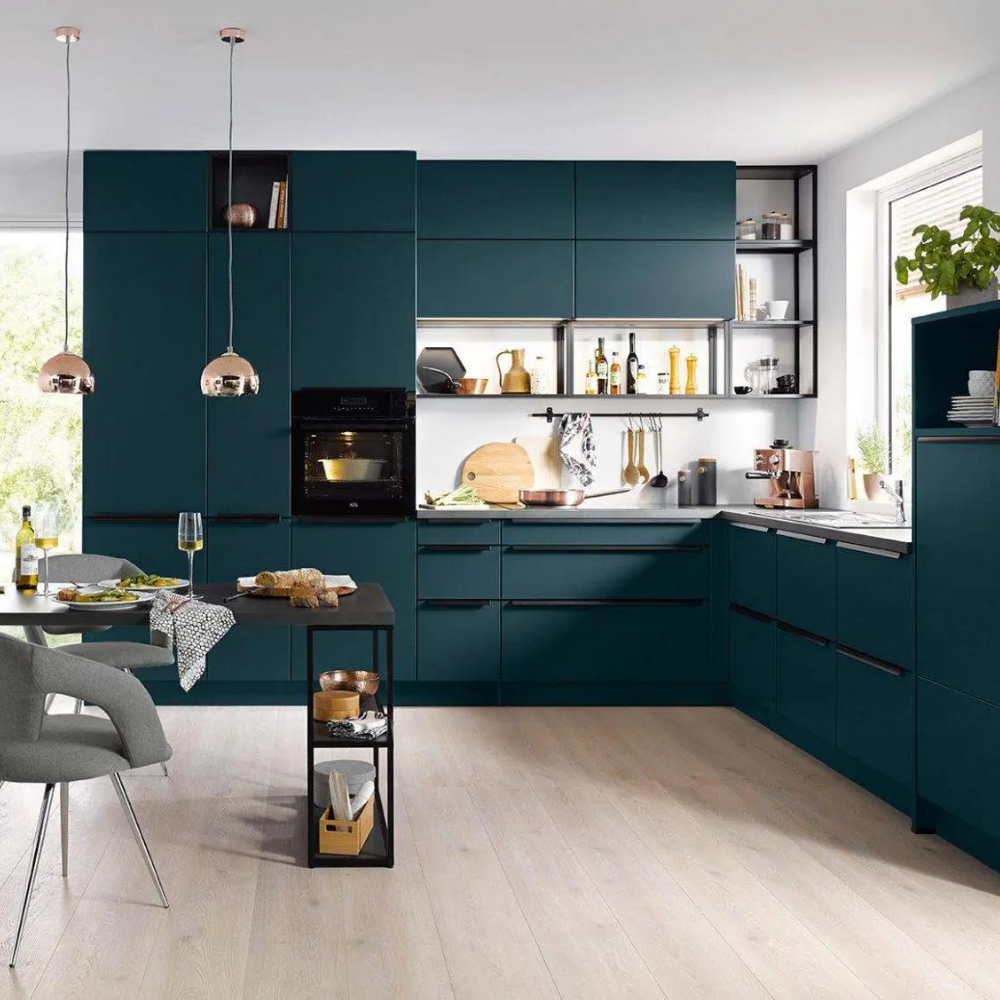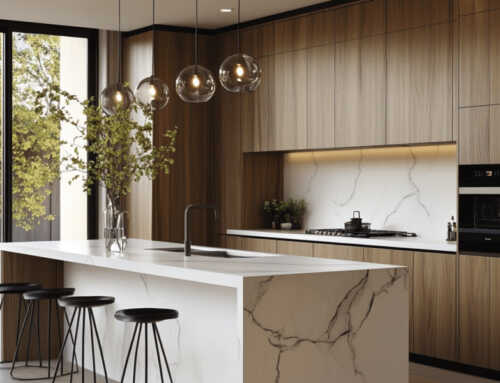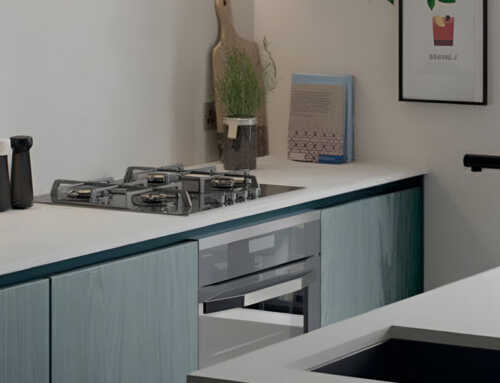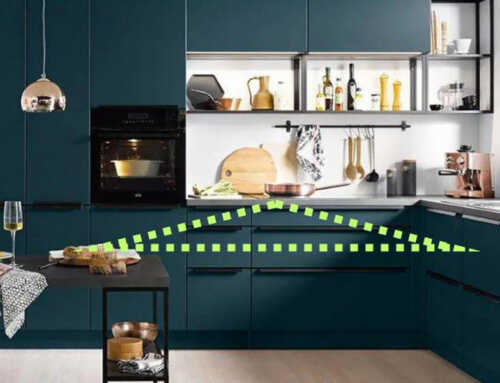The kitchen is often considered the heart of the home, especially for families. It’s where meals are prepared, homework gets done, and memories are made. Designing a family-friendly kitchen requires a thoughtful balance of functionality, safety, and style. Here are some of our top tips for creating a space that meets your family’s needs while remaining aesthetically pleasing.
1. Prioritise Safety
When designing a family-friendly kitchen, safety should be your top priority. Sharp objects like knives should be stored securely in drawers or on magnetic strips placed high enough to be out of children’s reach. Child-proof locks for cabinets containing hazardous materials are essential. We recommend investing in appliances with safety features—like ovens that prevent accidental activation. Also, consider non-slip flooring to help keep little ones safe from falls.

2. Choose Durable Materials
Children can put surfaces to the test with their daily activities, often causing wear and tear that can be challenging to manage! Opt for durable materials that can withstand the rigours of daily life. We have found that quartz or granite worktops are fantastic choices—they resist scratches and stains beautifully. For cabinetry, consider laminate or solid wood; both can handle the wear and tear of family use while maintaining their charm over time.
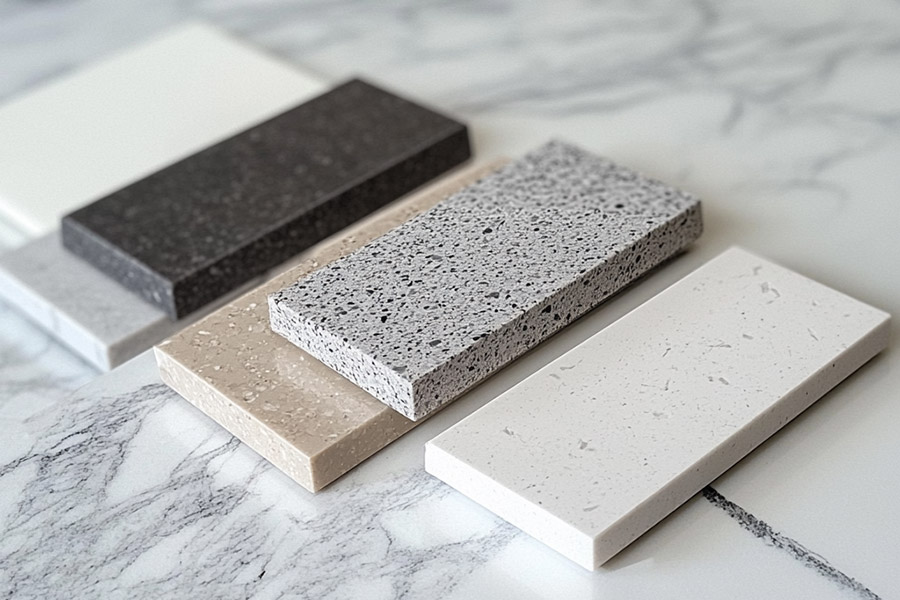
3. Create an Open Layout
An open kitchen layout fosters interaction, making it easier for family members to engage with one another—whether cooking together or simply chatting while preparing meals. We love the idea of incorporating an island as a focal point. Not only does it provide extra counter space for meal prep, but it can also serve as a casual dining area. Make sure there’s enough room to move around safely, even with the kids in the kitchen.
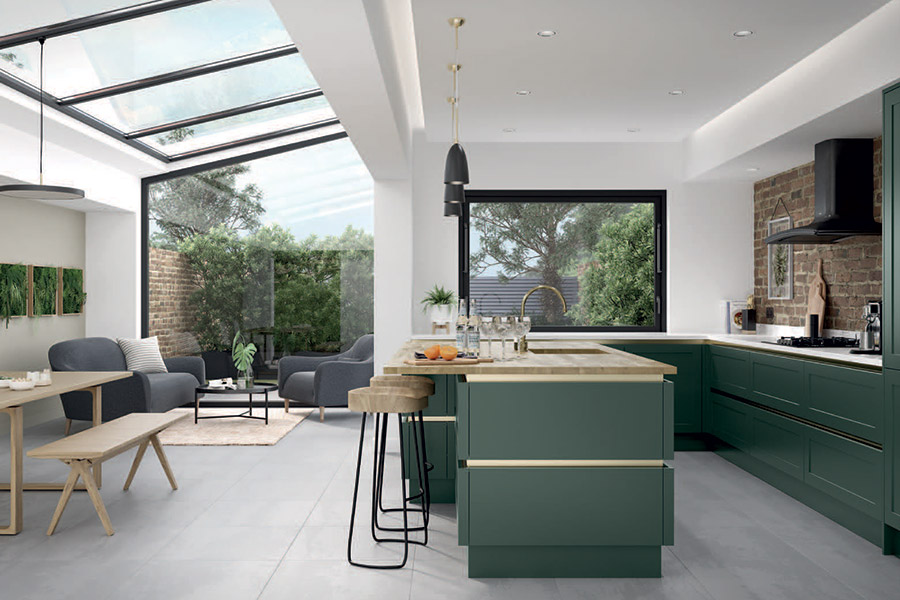
4. Incorporate Smart Storage Solutions
Families often have a lot of kitchen gadgets, dishes, and food items to store. Maximise your storage options by incorporating built-in solutions like pull-out drawers, lazy Susans, and overhead cabinets. Clear storage containers can be a game-changer for visibility and accessibility. We also recommend a designated area for kids’ snacks or lunch boxes, so they can help themselves when hunger strikes!
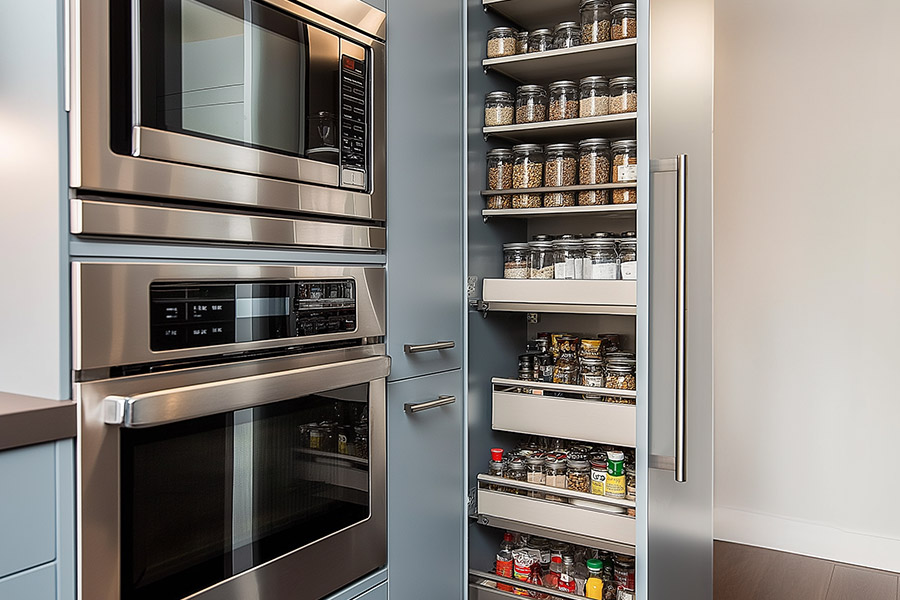
5. Designate a Homework Zone
Why not use your kitchen as a place for homework and projects? Setting up a small table and chairs in a corner of the kitchen can keep kids engaged while you prepare meals. This setup allows for easy supervision and a sense of togetherness. Don’t forget to include charging stations for their devices—keeping everything organised makes it easier for the whole family.
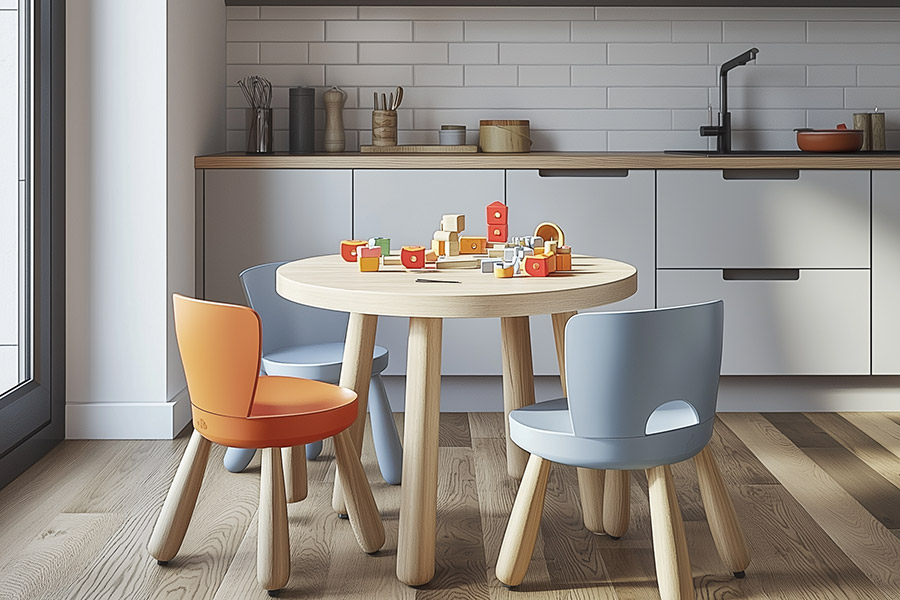
6. Consider Kid-Friendly Appliances
When selecting appliances, think about models that are user-friendly for all family members. Induction hobs are a fantastic option; they heat the pan without warming the surface, making them safer for children. Look for ovens with sliding racks and safety locks, which make them easier to access and operate, especially for budding young chefs.

7. Include a Family-Friendly Dining Area
If you have the space, consider incorporating a dining area within the kitchen. A casual breakfast nook or dining table can encourage family meals and a space to have conversations. Choose a table and chairs that are sturdy and easy to clean, using materials that can withstand spills and messes.
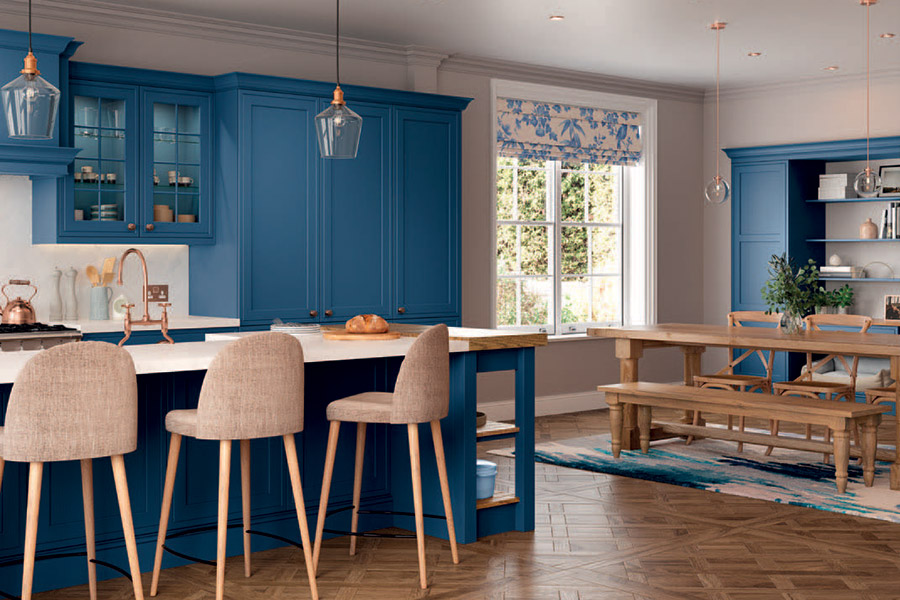
8. Personalise the Space
Make your family-friendly kitchen feel like home by adding personal touches. Display family photos, children’s artwork, or even a chalkboard wall for notes and doodles. Incorporating elements that reflect your family’s personality can transform the kitchen into a warm and inviting space.

9. Maximise Natural Light
A bright kitchen is not only welcoming but can also improve mood and productivity. Maximise natural light by choosing large windows or patio doors that open to outdoor spaces. If privacy is a concern, consider sheer curtains or blinds that allow light while still providing coverage. A sunlit kitchen is the perfect backdrop for family meals and gatherings.

10. Plan for the Future
As your family grows, your kitchen should adapt to meet those evolving needs. Consider flexibility in your design by allowing for reconfiguration of spaces and the addition of new appliances or furniture. Planning for the future can save you from costly renovations down the line and ensure your kitchen continues to be a family hub for years to come.
Designing a family-friendly kitchen requires thoughtful planning and consideration of your household’s unique needs. By prioritising safety, incorporating smart storage solutions, and creating a welcoming atmosphere, you can design a space that truly serves as the heart of your home. Whether you’re cooking, entertaining, or simply spending quality time together, a well-designed kitchen can enhance your family life for years to come.
